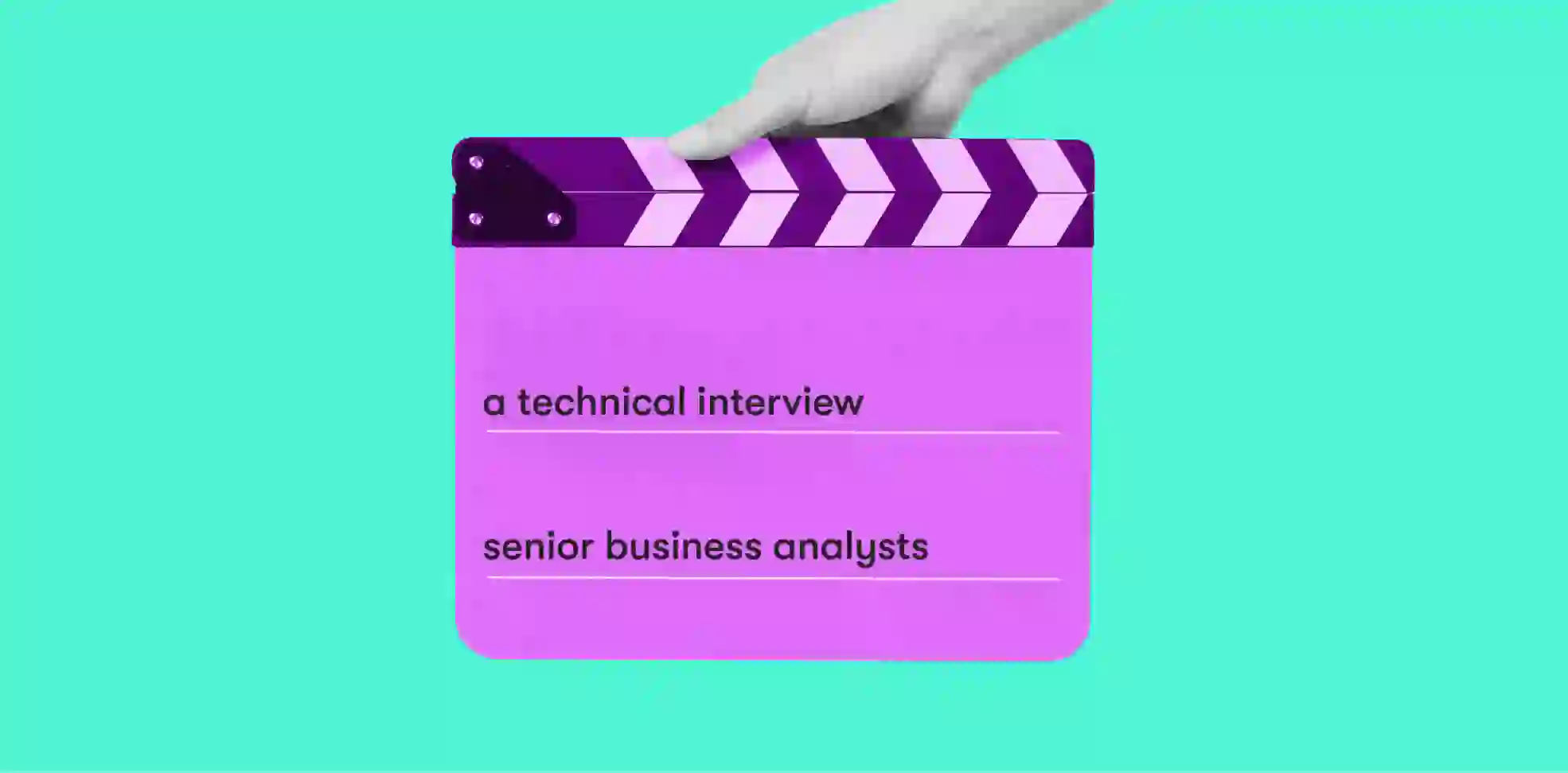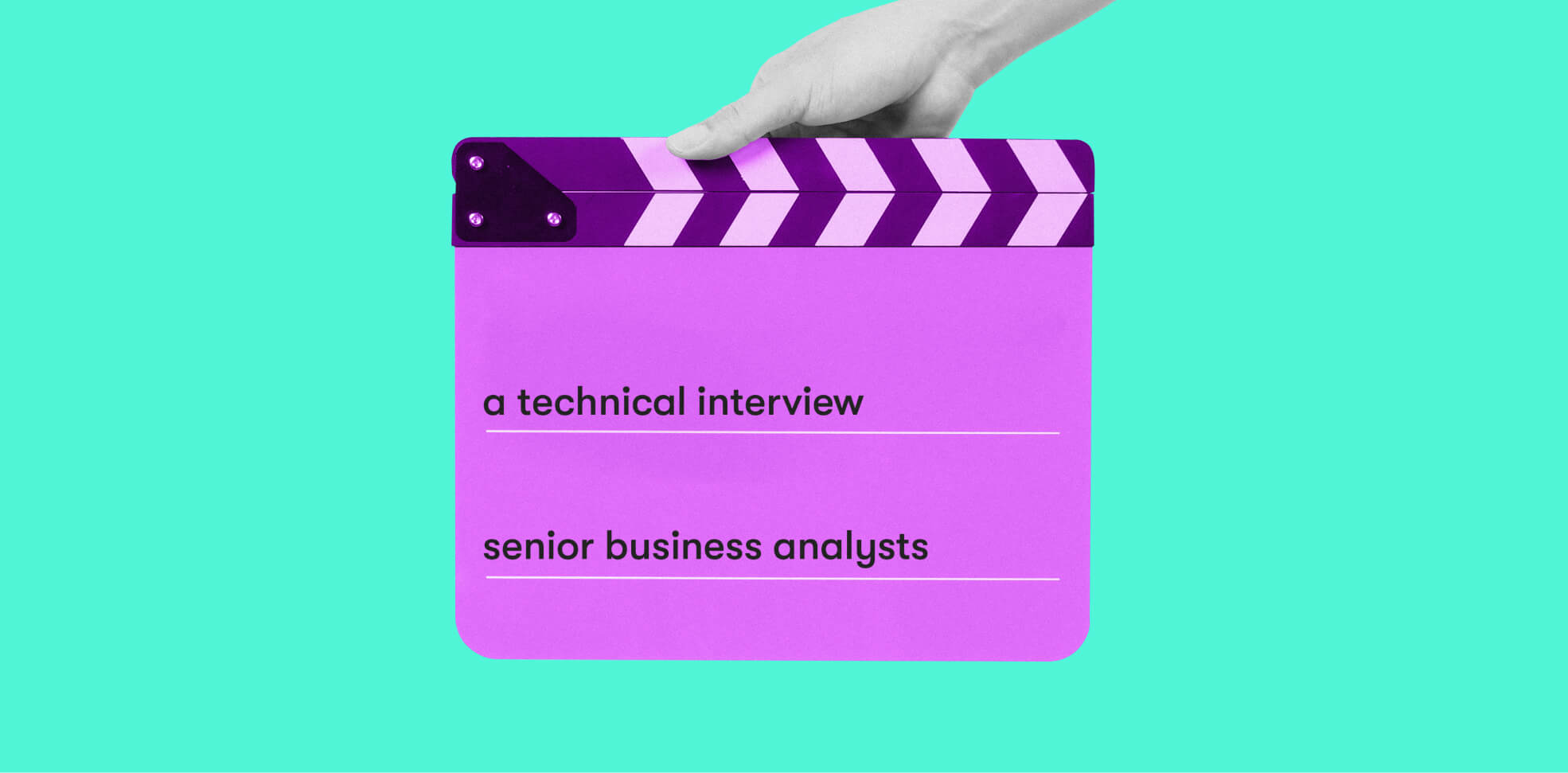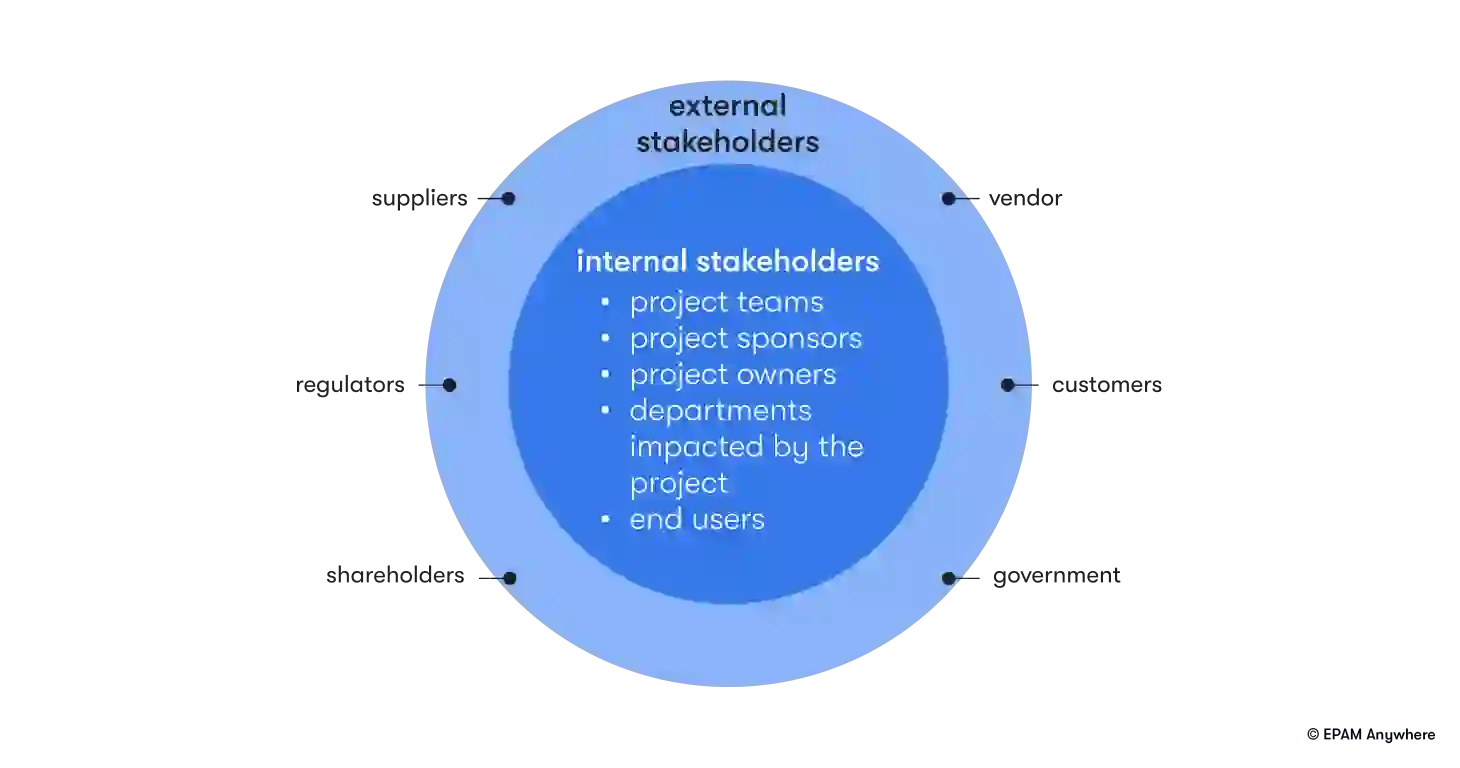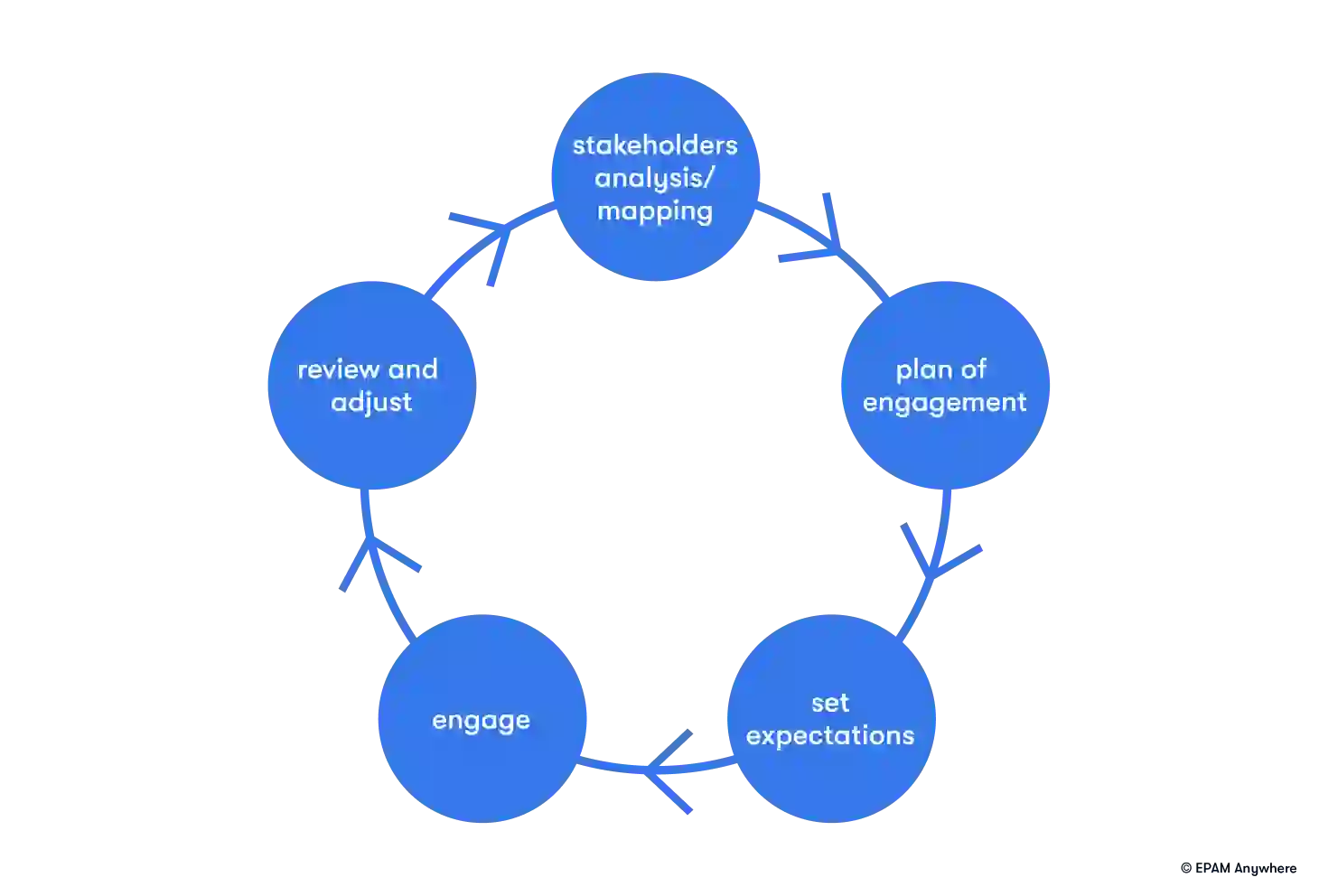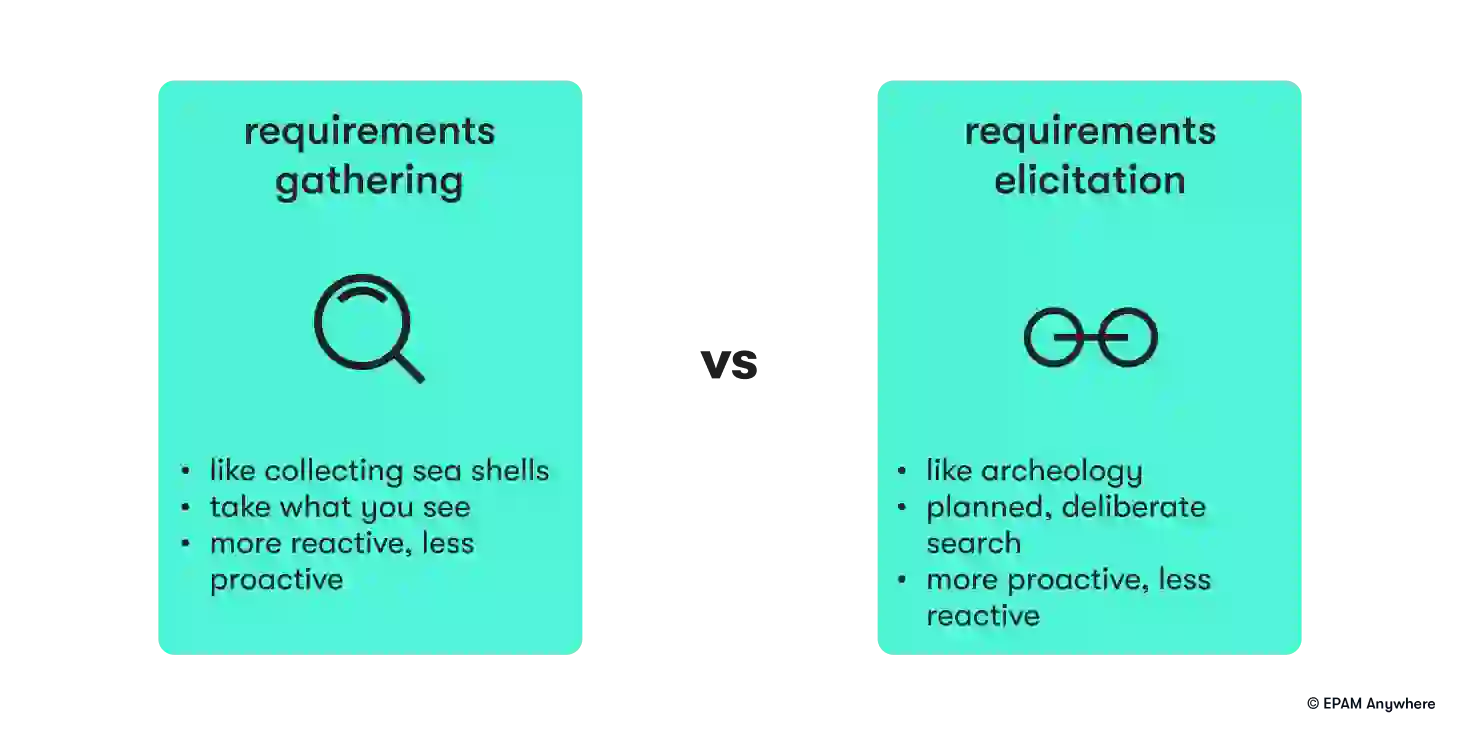The role of a business analyst presents diverse opportunities at this time due to very important conditions, such as process automation, digital transformation, and the need for data-driven decision-making.
Thanks to EPAM Anywhere, I’ve been able to become a certified technical interviewer assisting in selecting candidates for remote senior business analyst jobs. Additionally, due to my work experience, I’ll be sharing a guide of the most important questions for business analysts so that you’re better prepared and understand the dimension of the skills required for this position to pass a technical job interview successfully. Let's go!
1. What is the business analysis approach and what factors will you take into consideration to define it?
The business analysis approach describes the way business analysts work and what they will achieve. It’s important to set expectations based on work concerns to feed into a bigger plan and gain agreement on the deliverables.
There are three types of business analysis approaches: adaptive, predictive, and interactive. You should pick one of these approaches according to the following factors you identify:
- Background
- Scope
- Nature of project
- Timeline
- Number of stakeholders
- Project size
- Resources
- Organization
looking for a remote BA job?
Let us find one for you. Just send us your CV and our recruiters will get back with our best-matching job for you.
2. What strategies do you apply for stakeholder management?
Stakeholder mapping: Identify all stakeholders early in the project by conducting a thorough stakeholder analysis. Each stakeholder will have a different level of engagement in the project.
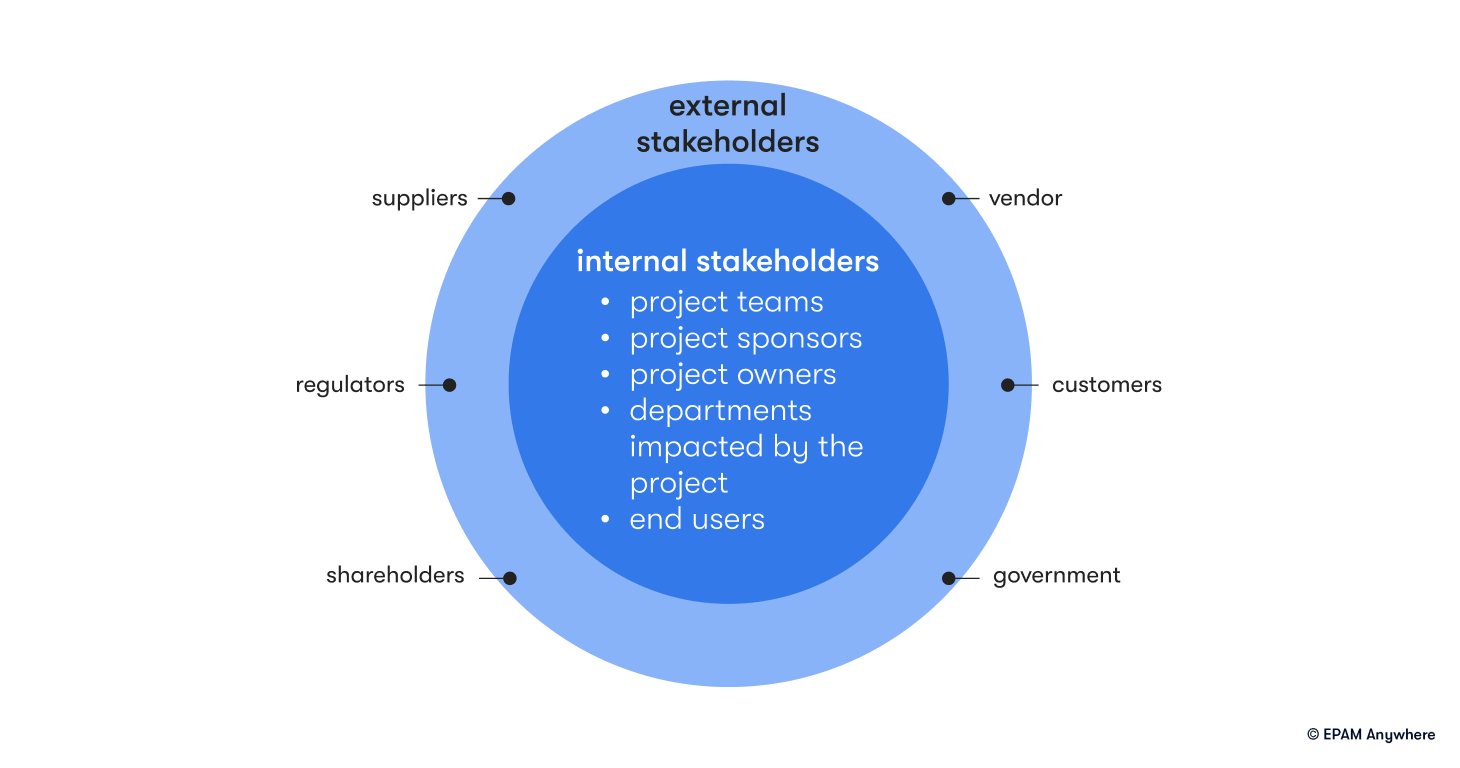
Keep stakeholders informed throughout the project lifecycle: Communicating clearly about the changes ahead will help stakeholders be aware of any challenges they may face or modifications they need to make in order to make the change successful.
Involve stakeholders in the definition of success: You will need to be able to explain your reasoning when something is affecting the project goals, as well as any expectations there are regarding project development.
Mitigate risks: Once you have identified and understood your stakeholders' influence over the project, it’s time to create a plan that reduces or eliminates any risks associated with their involvement.

The best way to engage stakeholders is to understand that they care about their responsibilities and want to do a good job. Despite this, there may be obstacles to successful stakeholder engagement. If this is the case, BAs will find it helpful to analyze the initiative and identify any roadblocks early on in order to resolve them. By handling the situation objectively and presenting a clear roadmap of the initiative’s impact, everyone will be able to work together more collaboratively.
3. Regarding project requirements, what’s the difference between verification and validation?
Validation is a process of confirming that the project requirements have been met. This confirmation must:
- Confirm business objectives
- Demonstrate stakeholder needs are being met
- Prove clear understanding by developers
Validation ensures that each requirement is reviewed and assessed for completeness, correctness, and applicability before being passed to the next stage of development.
- Correct: Answering a customer's or external stakeholder's needs in the most direct and useful way possible
- Clear: Has only one possible interpretation
- Feasible: Is workable and achievable within the known constraints
- Modifiable: Can be changed, with a record of prior changes, without losing its earlier value
- Necessary: Creates products for something customers really need
- Prioritized: Ranked according to importance of inclusion in the product
- Traceable: Must be linked to system requirements, designs, and code as well as tests
- Verifiable: Correct implementation can be determined by testing, inspection, or analysis
If you are not familiar with these terms, perhaps you have applied INVEST to your user stories for agile projects. This means you are validating your requirements.
Verification ensures that the designed and built product fully addresses documented requirements. It is the process of inspection, testing, and analysis during the entire lifecycle of a product to ensure that it meets its design specifications.
4. How many elicitation techniques have you applied and what are the benefits of each one?
As a senior business analyst, you should have experience and knowledge in most of the following elicitation techniques and can explain their benefits:
- Brainstorming
- Mind-mapping
- Delphi technique
- Interviews
- Surveys
- Observations
- Prototyping
- Documents review
- Interface analysis
- Requirements workshop
- Interface analysis
Through careful analysis of scenarios, the requirements elicitation aims to discover a system's requirements by its intended users, customers, and other stakeholders. While this practice is sometimes referred to as requirement gathering, it’s not the same as requirement elicitation.
Gathering simply means collecting something that has already been laid out. In this case, it assumes that the requirements are in plain sight and ready to be implemented. Elicitation refers to understanding and collecting data, then carefully analyzing that data to derive useful information. It is critical that requirements be generated (not gathered) in a systematic way through elicitation.
By gathering requirements, a BA does not function as a specialist or consultant since they are simply following orders. However, those orders might not be the best solution, and sometimes not even a solution at all.
Wants and needs differ greatly. In essence, demands are primarily driven by opinions, biases, and tech preferences. Therefore, senior BAs should instead concentrate on the latter.
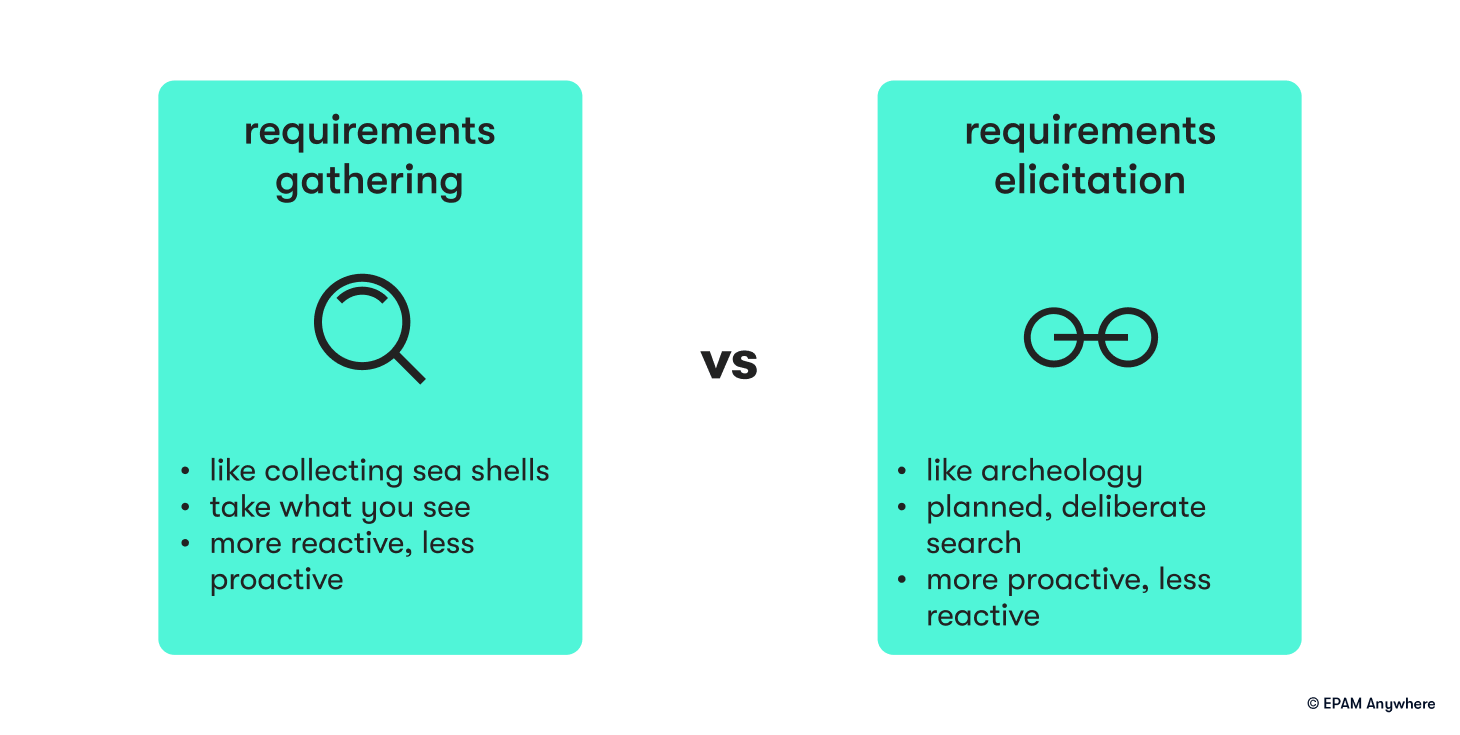
5. What SDLC models or frameworks do you have experience with?
As a senior BA, you should talk about traditional (like waterfall) and Agile (Like Scrum, Kanban, SAFE) SDLC models. Additional models or frameworks will demonstrate a deep knowledge of SDLC. Further questions may be asked about some models you’re familiar with to validate how much experience you have with them.
6. Why is it important to manage risks inside a product or project?
Risk analysis is an essential part of a successful project that involves taking measures to identify, analyze, plan for, and control any and all risks associated with your business analysis project. It’s a critical process that could make or break the end result.
Companies are frequently confronted with a range of risks that need to be studied and managed. Risks are any unpredictable events or circumstances that could potentially affect the outcome of a business solution and thus need to be taken into consideration during the business analysis process.
Risk management is not only about mitigating potential losses and trying to avoid the worst-case scenario, but rather also about leveraging possible opportunities and striving to achieve positive outcomes.
Risk analysis plays a crucial role in any endeavor, as it helps to identify potential risks and uncertainties that may affect the outcome. This enables the team to take proactive measures and develop effective strategies to reduce risk impact. Before the project starts, it's important to identify and communicate the levels of risk tolerance and acceptance threshold. This ensures that everyone is on the same page with regard to what is acceptable in terms of risk. After the team has identified the risks, risk assessment can be done collaboratively, allowing all members to discuss the probability and effects of such hazards. This way, everyone can work together to come up with the best solutions.
Risk analysis and management is a vital part of the product development process. It involves assessing potential risks and formulating strategies to minimize them in order to achieve desired results. This helps businesses control their losses and identify areas for improvement. To ensure that proper safeguards are put in place, analysts create strategies to minimize and shift the risks. As risk control is a continuous process, these plans need to be regularly revised and updated.
Regular communication with stakeholders is essential to identify and manage any potential risks associated with the product, helping to ensure that potential issues are addressed in a timely manner. Elicitation that zeroes in on areas of exceptional or potential failure can be seen as a type of risk management. Business analysts can gain insight into such risks by asking stakeholders 'what-if' questions.
7. What business considerations and techniques have you used to prioritize requirements?
Business considerations can include value, cost, risk, implementation complexity, likelihood of success, regulatory compliance, relationship to other requirements, stakeholder agreement, and urgency.
However, there are a great number of prioritization techniques, so for the purpose of this article, I’m going to list some of them and then explain one of them in-depth.
- RICE
- Eisenhower Matrix: four quadrants of time management
- MoSCow
- ICE Score Model
- Kano Model
- Weighted Scoring Model
- Weighted Shortest Job First (WSJF)
The Weighted Shortest Job First (WSJF) approach provides the maximum economic benefit for a company by deciding the priority of features, capabilities, and epics. It can be used in any organization to help teams work out how to prioritize initiatives. Product teams can use it to decide which items should be given priority in their product backlog.
User-business value: It’s important to understand the relative value that our offerings bring to the customer or business. Are our users more likely to opt for this over that? Will there be any revenue loss or gain if we take certain decisions? Could there be any penalties or other losses due to delaying a product launch?
Time criticality: The user's/business' needs are time-sensitive. Will they stick with us or look elsewhere? Are there particular dates or deadlines that could be impacted by this? How will this affect customer satisfaction right now? Answering these questions is essential to understand the criticality of time when it comes to this situation.
Risk reduction-opportunity enablement value: Are there any other benefits for our business? Will this feature reduce the likelihood of any delivery risks or problems? What sort of data can we gain from it? Does it provide us with new opportunities to expand our services and offerings?
WSJF is calculated by dividing the Cost of Delay by the job duration/size.
In order to calculate the Cost of Delay, you can come up with a scale for all aspects involved (e.g. 1-10) and then add them together. This sum will give you your Cost of Delay score.
WSJF relies on the job duration for its equation, but this can be tricky to calculate in the early stages, when it's uncertain who will handle the work or what workload capacity can be expected.
Establish a scoring system for the time or extent of each initiative on your list. This scale can vary from the Cost of Delay scale (e.g. 1 to 20) as long as you apply it consistently and uniformly to every project.
Figuring out how long a job will take can be complicated due to many underlying parameters. Resource levels, any dependencies, the required skill set — these and other issues can contribute to the length of time it takes for a project to be completed through your company compared to others. It’s therefore essential to have the team on the same page about the approach in assigning values for every parameter.
8. How do you manage requirements for traceability?
Traceability refers to a requirement management process or tool that allows participants or users to follow both forward and backward the lifecycle of a requirement. It also refers to the ability to link requirements (through specific relationships) to other artifacts or constructs in the product development process.
Every business need is tied to a requirement, and every requirement is tied to a deliverable through requirements traceability. This is an important practice for business analysts. With traceability, every requirement is justified and has a business purpose. Similarly, requirements may be related to each other. The concept of requirements traceability simply describes the relationship between requirements in a set, between business needs and corresponding requirements, and between requirements and project deliverables.
9. Which artifacts do you use to break down a product scope or a project? What is the purpose and outcome of each one?
- Roadmap: This is a tool for communicating your product vision and putting product plans into action. You should build your roadmap based on your product's strategic direction. This helps your product team focus on the most important work. In the roadmap, you should outline your high-level goals, illustrate the steps required to achieve them, and visualize a timeline for doing so.
- User Story Mapping: This is a visual exercise that helps product managers and their development teams define the work that will create the most appealing user experience. It’s used to improve teams’ understanding of their customers and to prioritize work. The team creates a dynamic outline of a representative user’s interactions with the product, evaluates which steps have the most benefit for the user, and prioritizes what should be built next. For agile organizations, it provides an alternative to building a flat list of backlog items or working from lengthy requirements documents.
- MVP: An MVP is the test version of a new product and includes the basic features to satisfy customer needs. It allows a company to know the level of interest and acceptance it can have thanks to early adopters in order to improve the product and launch it to a wider audience.
- Epic and User Story: User stories are short, simple descriptions of a feature told from the perspective of the person who wants the new capability, usually a system user or customer. One of the benefits of agile user stories is that they can be written at different levels of detail. We can write a user story to cover large amounts of functionality. These large user stories are generally referred to as epics. Because an epic is typically a user story that’s too large for an agile team to complete in one iteration, it is broken into several smaller user stories before being worked on.
10. What value does a BA provide to the software development lifecycle?
Business analysts work at the intersection of customers, business, and technology to facilitate the delivery of projects along with other project roles.
As a business analyst supports every stage of the project lifecycle, they aim to enable on-time delivery of value-aligned key business objectives. The highest priority for a BA is to satisfy the customer through the early and continuous delivery of valuable software.
A personal note
Facing an interview will always generate stress. Rely on your knowledge and experience to answer the questions in the best way you can, and I'm sure this guide will be very useful for you to prepare yourself to become a senior BA.
Thank you for your time reading this article, and stay tuned for new business analysis content on this blog.

Explore our Editorial Policy to learn more about our standards for content creation.
read more